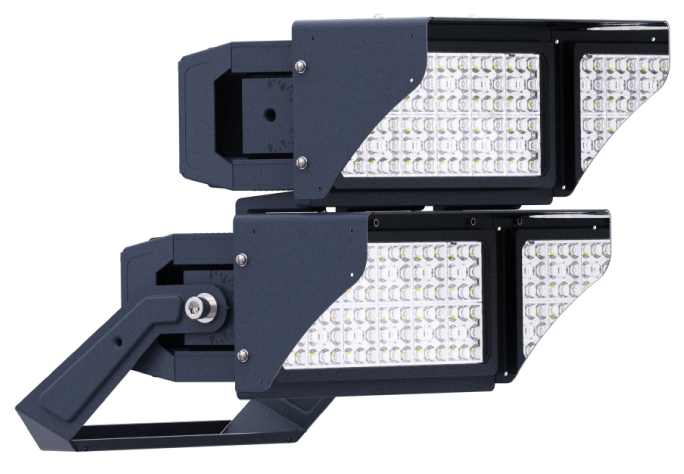The Optimal Football Field Lights Height
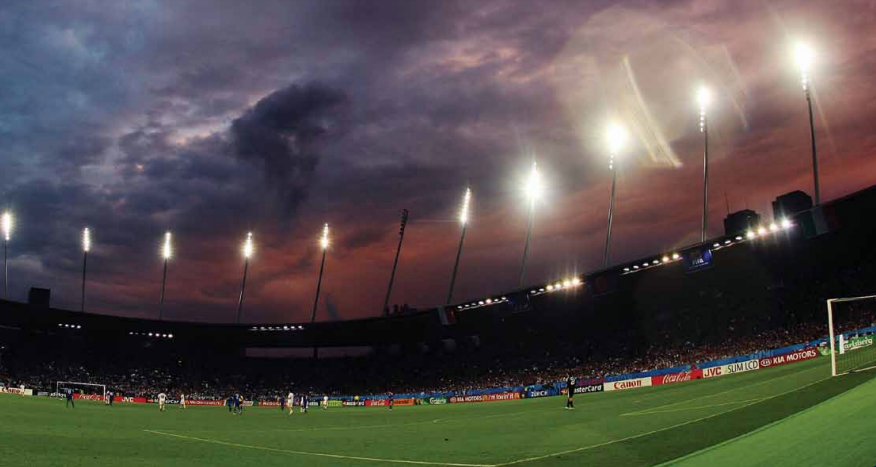
Directory:
1. General Height and Angle Requirements
2. Lighting Categories and Height Variations
3. Glare Control and Player Comfort
4. Maintenance and Testing
The football field lights height plays a critical role in ensuring optimal illumination, player safety, and broadcast quality. The AFC Stadium Lighting Guidelines provides detailed technical specifications for lighting systems, emphasizing the importance of installing heights to achieve uniform illuminance, minimize glare, and meet competition standards. Below, we explore the key considerations for determining the ideal height of football field lights based on AFC recommendations.
1. General Height and Angle Requirements
The luminaire installing positions significantly impact vertical and horizontal illuminance levels, uniformity, and glare control. Key principles include:
Minimum Height: Luminaires should generally be installed at least 20 meters above the pitch surface to reduce discomfort glare for players and spectators.
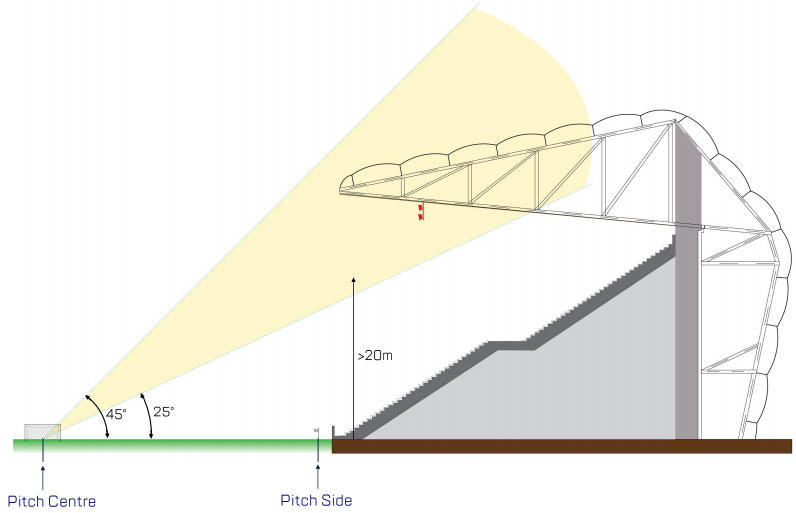
Tilt Angle: Flood lights should be angled between 25°–45° above the pitch center to balance light distribution and minimize shadows.
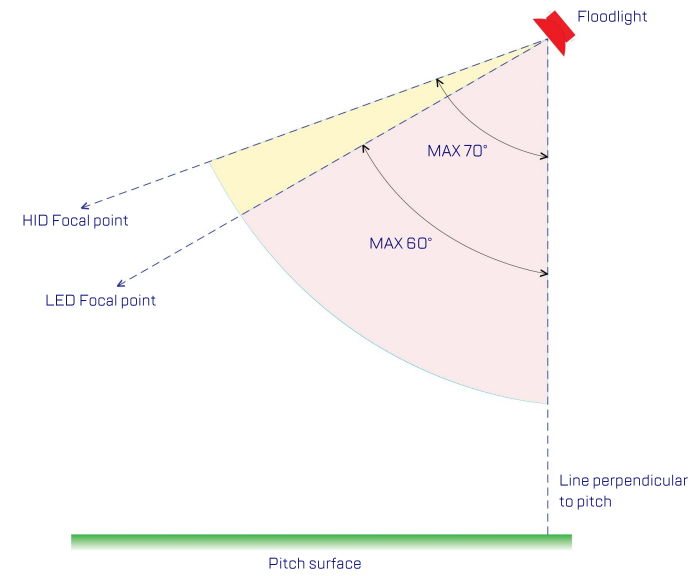
Focus Point Restriction: Luminaires positioned near goal lines or penalty areas must maintain a minimum angle of 60° from the goal line to avoid blinding players.
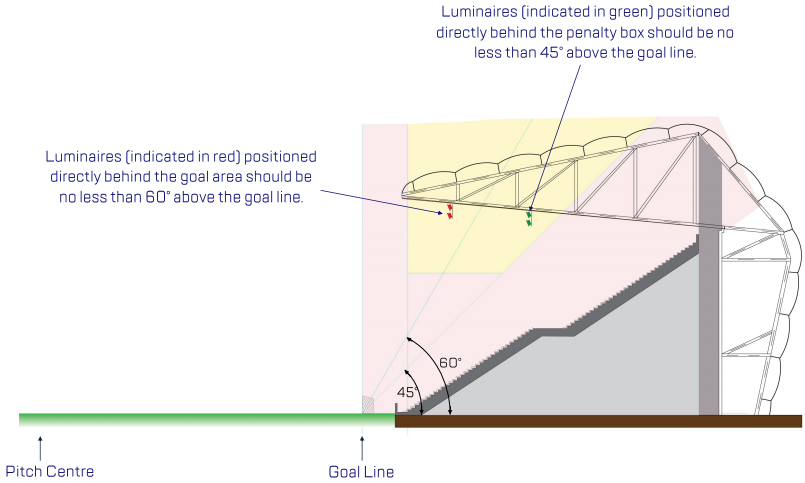
2. Lighting Categories and Height Variations
The AFC categorizes stadiums into five lighting levels (Category 1–5), with Category 1 being the highest standard for international broadcasts. Height requirements vary slightly depending on the competition level:
Category 1 & 2 Stadiums
Height: Corner towers or roof-installed systems should exceed 40 meters for corner columns.
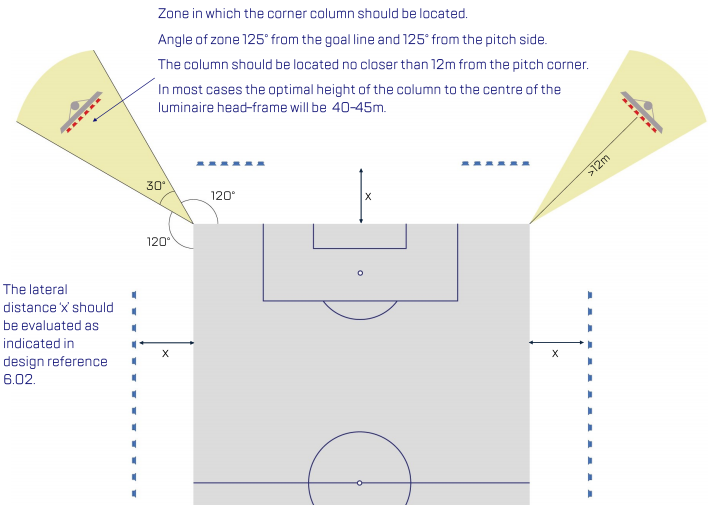
Linear Arrays: For roof-rim lighting, a lateral distance of ≥12.5 meters from the pitch perimeter is recommended when luminaires are installed at 24 meters high.
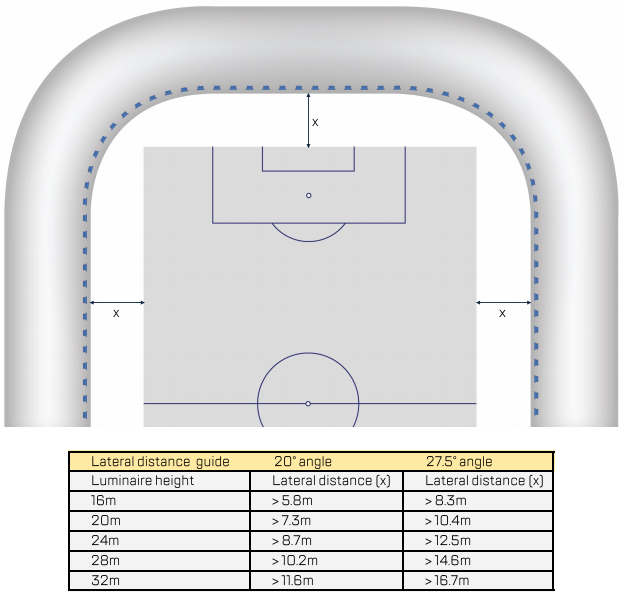
Vertical Illuminance: Higher installing heights ensure vertical illuminance levels of ≥1.200 lux (Category 1) and ≥1.100 lux (Category 2) on all reference planes (Tables 4.01–4.02).
Category 3–5 Stadiums
Height Flexibility: Lower-tier stadiums may use shorter columns (e.g., ≥15 meters) but must maintain a 25°–30° lateral angle to avoid steep light angles that cause harsh shadows.
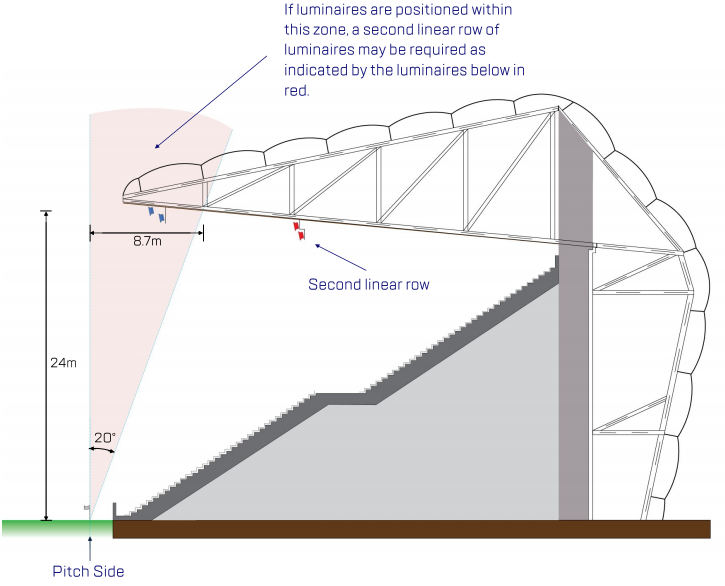
Compromise Solutions: Existing stadiums with structural constraints may install secondary linear rows of luminaires at reduced heights, provided they meet minimum uniformity ratios.
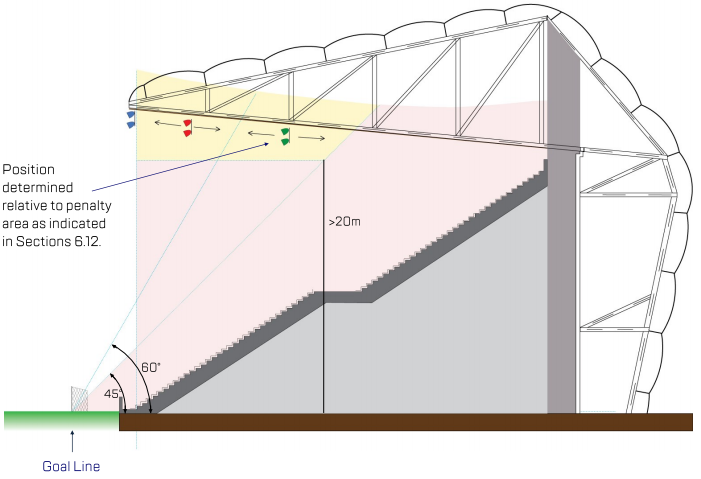
3. Glare Control and Player Comfort
Excessive glare from poorly positioned lights can hinder player performance and spectator experience.
Avoiding Low Installing: Luminaires placed below 20 meters require rigorous glare evaluation using the CIE 112-1994 Glare Rating (GR) system.
Behind Goal Lines: Lights must be installed ≥60° above the goal line to prevent glare for goalkeepers and attacking players.
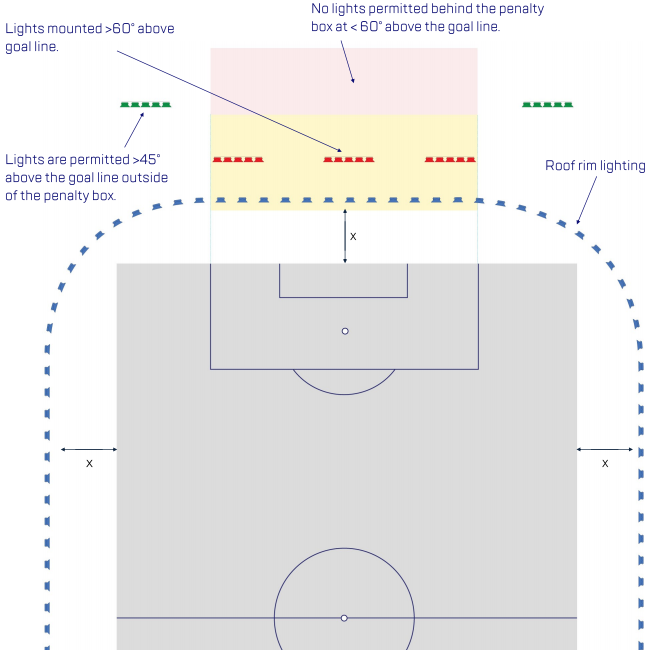
4. Maintenance and Testing
Regular maintenance ensures sustained performance:
Maintenance Factor (MF): LED luminaires, preferred for their longevity, should use an MF of ≥0.90 to account for lumen depreciation.
Post-Installation Testing: Illuminance tests must validate height compliance, measuring horizontal and vertical uniformity across 96 grid points.
The football field light height is not a standalone metric but part of a holistic design balancing illuminance levels, uniformity, glare control, and stadium architecture. For Category 1–2 stadiums, heights of 20–40 meters with precise angles are critical for broadcast-quality lighting, while lower categories allow flexibility without compromising safety. Adherence to these standards ensures optimal conditions for players, officials, and global audiences.
5. Related Product
